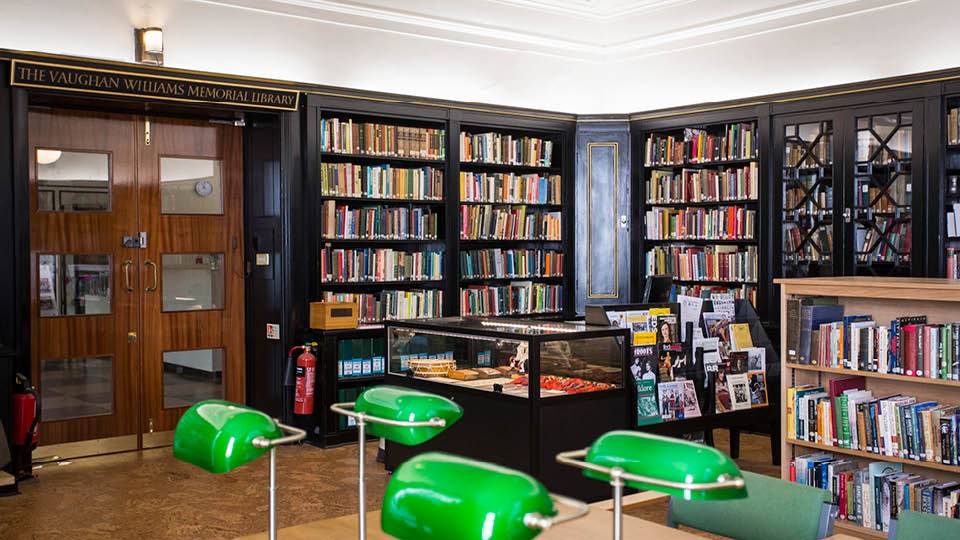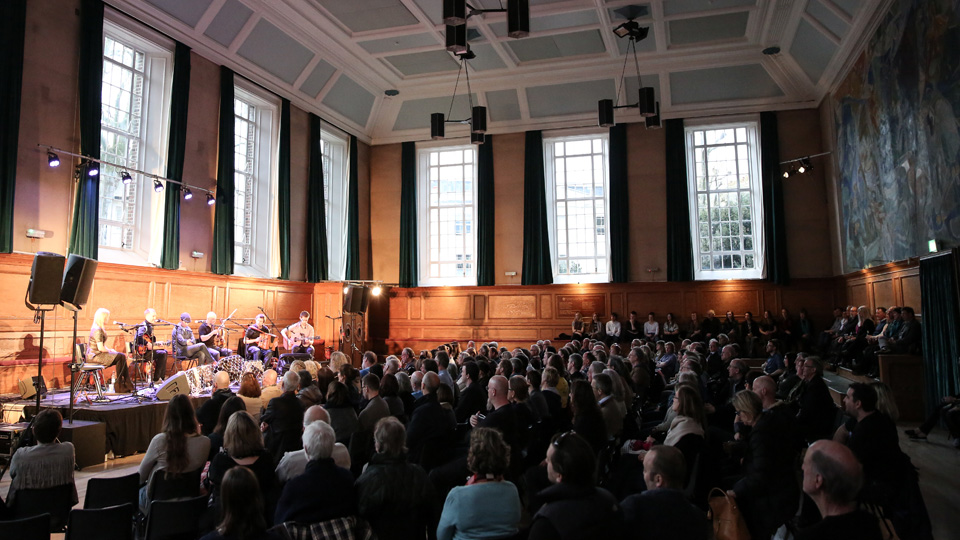Cecil Sharp House at 90
Cecil Sharp House marks 90 years at the heart of English Folk
The House may be closed for all events, but we are still determined to celebrate our birthday.
For ninety years, English folk music and dance have had an official home in a quiet corner of central London.
Cecil Sharp House was declared open in June 1930 as the custom-built headquarters of the Folk Dance Society (since 1932 the English Folk Dance and Song Society), one of the earliest such institutions anywhere in the world. The House has welcomed countless people over the decades, enabling them to develop their passion for – and to expand their knowledge of – everything folk related.

Cecil Sharp House is named after one of the most celebrated collectors of folk music and dance of the late 19th early 20th century. When Cecil James Sharp died in 1924, funds were raised to create the first dedicated folk arts centre in the UK in his honour, to provide a permanent home for his collections, and as a venue for everyone to enjoy vibrant English folk. The design of the House, by architect Henry Martineau Fletcher, includes classic Arts and Crafts elements.
From the day it opened, the building has been devoted to folk music and dance and after 90 years, it feels like folk has permeated the actual fabric of the building. The House has accommodated all sorts of visitors, some more expected than others; from Princess Margaret (who attended several dances during her time as President of the Society in the early 1960s) to many of the pop stars of the BBC Electric Proms in the 2000s.

Countless romances have blossomed on the dance-floor of Kennedy Hall, the impressive high-ceilinged venue which takes up most of the ground floor of the building. This room is home to an enormous and colourful mural commissioned in 1951 from influential artist Ivon Hitchens, unveiled in 1954 and much celebrated by critics. Many thousands of contented hours have been spent in dedicated research at the Vaughan Williams Memorial Library, the custodian of England's national folk music collection which in normal times welcomes visitors free of charge – its huge online resources are still available. And how many gigs have been enjoyed, and choruses sung, and instruments raised to learn yet another new-but-old tune?
Cecil Sharp House hosted the world’s first International Folk Dance Festival in 1935 and has also presented a varied series of folklore inspired exhibitions.

Visits to the Library became an essential activity for many figures of the folk revival of the 1960s – many of whom also performed at Cecil Sharp House. Seminal albums were recorded in the basement, including the Watersons' hugely influential but still relatively little-known Bright Phoebus. In more recent years, many of the most celebrated folk musicians have presented gigs there. Until all public buildings were forced to close in March 2020, hundreds of adults attended year-round evening and weekend classes in music and dance at Cecil Sharp House. Young people attend holiday courses and weekend sessions, and families of all ages enjoyed monthly barn dances. The organisation is currently presenting many of these classes online until the building can reopen. But this is not the first time the building has survived a crisis – it was partially rebuilt after suffering substantial bomb-damage during WW2.

Peggy Seeger wrote recently: 'Cecil Sharp House has been in my life for 64 years. I arrived for the first time in Britain in 1956, met Ewan MacColl and within a week he was taking me to his favourite haunt in Camden Town. We turned up day after day, week after week, surfing recordings in the Cecil Sharp House archive and pouring over anthologies in the library. I know of no central institution in my native country that has instigated such as the English Folk Dance and Song Society and, most important, made it available to the general public. Thank you to all involved – in the past, present and future – who keep this wonderful place alive and functioning.'
In addition to its undisputed central place in English folk, Cecil Sharp House is recognised as a vibrant venue for the wider performing arts. The venue hosts innumerable rehearsals for plays, musicals and concerts – Early rehearsals for Evita were held there before the show opened in 1978, as well as first auditions for the Harry Potter films. It is a regular filming location for popular television entertainment shows, as well as a popular venue for weddings, parties, vintage fairs and other special events.

Do you have recollections of Cecil Sharp House that you’d like to share? Do you have photos taken here in years gone by – documentation of formal gatherings, or snaps taken in the bar, or anything in between? We would love to add them to our archives: please email us [email protected].




